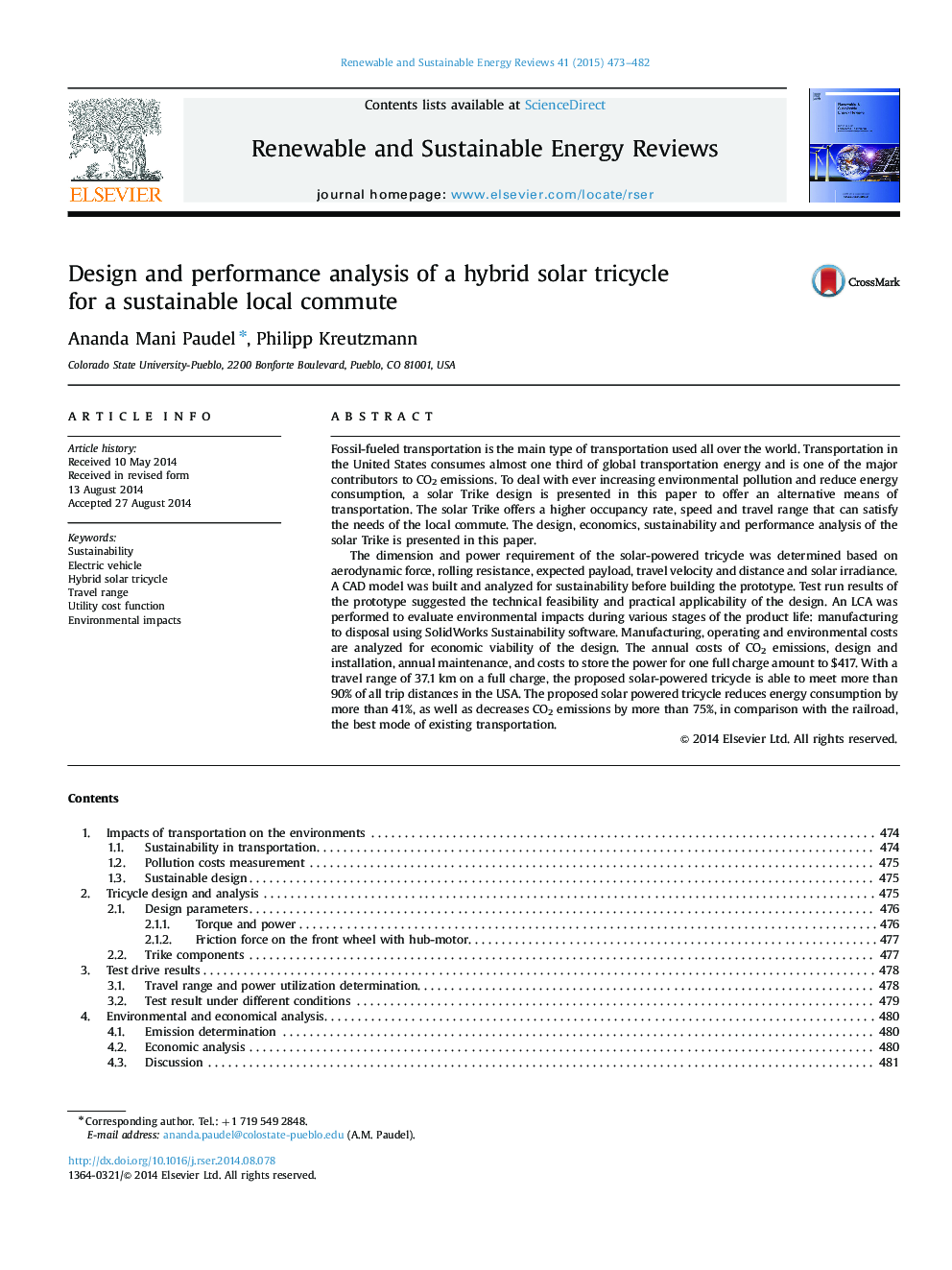| Article ID | Journal | Published Year | Pages | File Type |
|---|---|---|---|---|
| 8118517 | Renewable and Sustainable Energy Reviews | 2015 | 10 Pages |
Abstract
The dimension and power requirement of the solar-powered tricycle was determined based on aerodynamic force, rolling resistance, expected payload, travel velocity and distance and solar irradiance. A CAD model was built and analyzed for sustainability before building the prototype. Test run results of the prototype suggested the technical feasibility and practical applicability of the design. An LCA was performed to evaluate environmental impacts during various stages of the product life: manufacturing to disposal using SolidWorks Sustainability software. Manufacturing, operating and environmental costs are analyzed for economic viability of the design. The annual costs of CO2 emissions, design and installation, annual maintenance, and costs to store the power for one full charge amount to $417. With a travel range of 37.1Â km on a full charge, the proposed solar-powered tricycle is able to meet more than 90% of all trip distances in the USA. The proposed solar powered tricycle reduces energy consumption by more than 41%, as well as decreases CO2 emissions by more than 75%, in comparison with the railroad, the best mode of existing transportation.
Related Topics
Physical Sciences and Engineering
Energy
Renewable Energy, Sustainability and the Environment
Authors
Ananda Mani Paudel, Philipp Kreutzmann,
